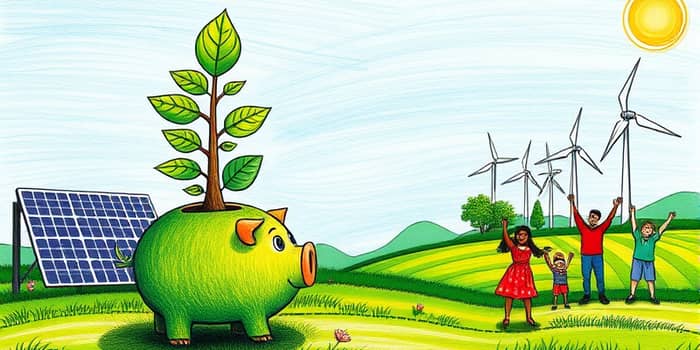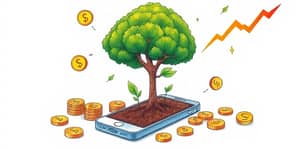
In an era where climate concerns dominate headlines and consumers seek purpose alongside profit, how we save money has never been more meaningful. Green savings accounts are changing the banking landscape by allowing savers to align their money with personal values. This comprehensive guide will explore the mechanics, benefits, leading providers, and actionable steps to help you transition toward sustainable financial habits and positive environmental impact without sacrificing security or growth.
Green savings accounts, often called ethical or sustainable savings accounts, are designed to ensure that depositors’ funds support projects with tangible environmental or social benefits. Instead of financing fossil fuel extraction or tobacco leaf processing, these accounts funnel capital into renewable energy installations, sustainable agriculture cooperatives, or conservation initiatives. Depositors gain peace of mind knowing their money is free from associations with industries that exacerbate climate change or social inequity. Furthermore, many banks provide ongoing impact reports or interactive dashboards, illustrating how every dollar contributes to the greater good and reinforcing transparency and accountability in finance.
Traditional banks may still invest in coal mines, oil drilling, or other high-emission industries. By contrast, green savings accounts empower customers to drive capital away from harmful sectors and toward solutions. According to a 2024 Morgan Stanley study, 55% of investors plan to allocate more resources to sustainable investments in the next year. This shift reflects growing consumer demand for banking options that mirror personal ethics and long-term planetary health.
When you deposit money into a green savings account, the institution commits to allocating those funds into predefined green initiatives. This allocation can be direct, such as approving loans for a community solar cooperative, or indirect, like partnering with environmental nonprofits that manage conservation programs. Some banks go a step further by embedding features in everyday transactions, for example, planting a tree for every debit or credit card purchase made.
Illustrative examples include:
Green savings account yields can rival—or even surpass—traditional savings products, especially when consumers meet criteria like minimum monthly deposits or e-statement adoption. The table below highlights representative products, their yields, and signature sustainability features. Remember that rates are subject to change and may vary by region or account type.
Not all products labeled ‘green’ offer genuine impact. To distinguish authentic green savings accounts from those engaging in superficial marketing:
1. Review public impact reports or borrower case studies. 2. Check for endorsements from reputable environmental NGOs. 3. Seek out independent certifications or ratings such as Morningstar sustainability scores or Ethical Consumer approvals. Transparency portals or interactive maps that trace your deposits to specific projects are a strong indicator of institutional commitment.
Environmental, Social, and Governance (ESG) criteria have become mainstream. In the United States alone, ESG-themed assets surpass $17 trillion, and annual flows into sustainable funds continue to grow at double-digit rates. Beyond consumer demand, regulatory bodies and institutional investors increasingly pressure banks to disclose climate risks and reduce financing for carbon-intensive industries. These shifts suggest that green savings products are more than a niche; they are part of a systemic transformation in global finance.
Adopting a green savings account can serve as the cornerstone of a broader eco-friendly lifestyle. Pair your account with sustainable budgeting tools, conscious spending apps, and practices like minimal waste living. By viewing banking as part of a holistic approach to sustainability, you reinforce positive habits and amplify your contributions to climate action.
What makes a savings account truly green? A genuine green account dedicates deposits to verifiable environmental or social projects, excludes funding for harmful industries, and offers transparent reporting on its impact.
How do the returns compare with traditional accounts? Some green savings accounts offer competitive yields, while others may trade slightly lower rates for direct environmental benefits. Always compare current APYs and factor in the non-financial value of positive impact.
Is my money as safe as in a conventional bank? Most established green savings accounts are offered by FDIC- or NCUA-insured institutions. Fintech platforms often partner with insured banks, but you should verify deposit protections before opening an account.
Switching to a green savings account is straightforward. Begin by researching providers that match your values, comparing APYs and sustainability credentials. Open an account online or in person, then set up regular deposits. Monitor your impact through digital dashboards or annual sustainability reports. Finally, engage friends and family by sharing your journey and encouraging them to bank sustainably too.
Your financial decisions can drive real-world change. By choosing a green savings account, every dollar you save becomes an investment in a healthier, more sustainable world for future generations.
References













